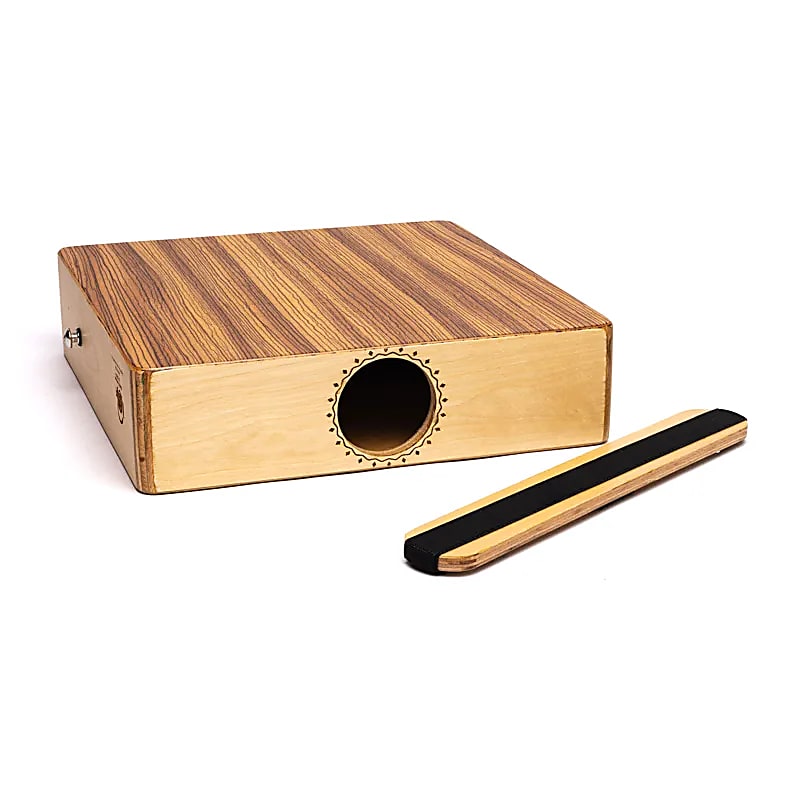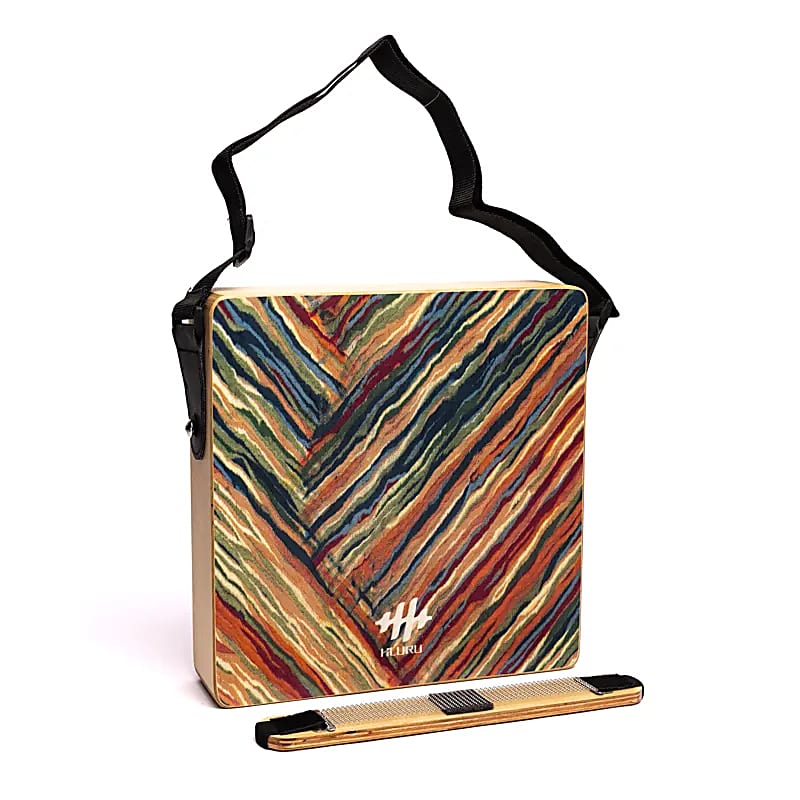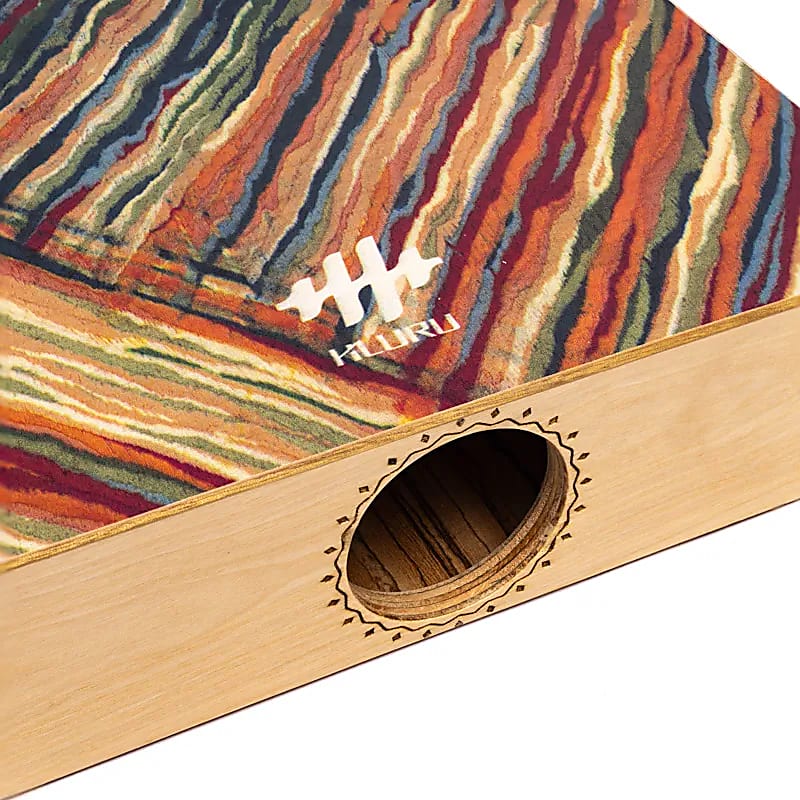Travel Cajon Drum (Hluru), 30.5x29.5x7.3 cm - 1050 grams. Made of maple and birch, perfect for playing while standing!
Travel Cajon Drum (Hluru), 30.5x29.5x7.3 cm - 1050 grams. Made of maple and birch, perfect for playing while standing!
Couldn't load pickup availability
About the product:
- Weight in grams: 1054
- Size in centimeters: 30.5 x 29.5 x 7.3
- Materials, Panels: maple / zebrano
- Body: birch plywood
- Thickness: front panel 1.5 mm, sides 12 mm, back panel 2.5 mm
- Support strap for standing up included
A cajón is a box-shaped percussion instrument, played by striking the front or back face with the hands.
Despite its simple shape, it offers a wide range of sounds, from bass sounds to snare drum slaps, making it a popular instrument in acoustic, world and fusion music.
The Travel Cajon is a portable, double-sided version of this timeless instrument. The adjustable snare drum element produces crisp sounds, while the main body offers different tones depending on where it is struck.
The included strap allows for standing playing, ideal for impromptu music sessions, outdoor gatherings or adding rhythm to a sound healing session.
📜 'History' Bonus:
The Cajun drum is an instrument that occupies an important place in the traditional Cajun music of Louisiana (United States). This musical style, which comes from afar... and was brought up to date by Acadians (French-speaking exiles from Canada), evolved in southern Louisiana starting in the 18th century. Here is the history of the Cajun drum and its role in this musical culture.
🥁 History of the Cajun Drum
🎵 1. Origins of Cajun Music
The Cadiens (or Cajuns) are descendants of the Acadians , expelled from Canada (Nova Scotia) by the British between 1755 and 1764 (the "Great Upheaval").
Settled in Louisiana, they preserved their language, their culture and their music.
Cajun music is traditionally played with the fiddle , diatonic accordion , and sometimes the guitar or triangle .
🥁 2. Introduction of drums and drums into Cajun music
For a long time, Cajun music had no percussion . The rhythm was carried by the rhythm fiddle , the accordion and sometimes a triangle .
But from the 1940s-1950s , under the influence of swing, country, blues and zydeco , drums and drums were gradually introduced to reinforce the rhythm.
🥁 The "Cajun drum" is not a traditional African or Native American drum, but rather a general term for the percussive part of the modern Cajun band , often played on a drum kit or sometimes a single drum (snare or tom) in more acoustic or minimalist settings.
🪘 3. Difference with Creole and Zydeco percussion
Zydeco (Louisiana Creole music, often confused with Cajun) sometimes uses the frottoir (washboard) and more pronounced percussion.
The Cajun drum , on the other hand, remains more discreet , serving to support the tempo , not to dominate the music.
In some modern traditional bands, a single snare drum may be used, played with brushes or light sticks.
📻 4. Evolution and role today
Today, in contemporary Cajun groups, the drum kit (or a "Cajun drum") is often used to provide a rhythmic dance base , especially during Cajun balls or "fais do-do" (traditional festivals).
The approach is often light and respectful of the traditional style: no solos, few toms, lots of hi-hat and snare drum playing.
📕📘📗📙 In summary
| Element | Detail |
|---|---|
| Origin | Introduced in the 1940s–50s in Cajun music |
| Function | Light and danceable rhythmic support |
| Instrument type | Light jazz drums or simple acoustic drums (snare, tom) |
| Context of use | Cajun dances, festivals, concerts, as accompaniment |
| Influences | Swing, country, blues, zydeco |
Share






